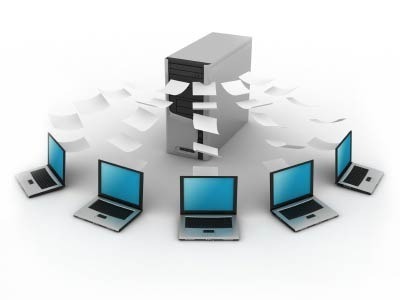DBMS (Database Management System)
A database management system (DBMS) is a collection of computer programs that controls databases in every way–creation, maintenance and use of the database. Specifically, it enables an organization to hand power and control of the database into the hands of the administrators and other specialists who understand the database. One of the most important aspects of a DBMS is the end user. A DBMS ensures that information is presented to users from the database in a logical fashion.
Organization of a Database Management System
A DBMS is categorized based on the data structure or type. Like types of data stick together. When an application program sends a request for data, the DBMS accepts it, interprets it and then sends an instruction to the operation system to initiate the transfer of the data. The data is transferred through the DBMS and the original application gets what data it needs.
The use of a DBMS also allows for information systems to be changed more easily. This is especially important in the IT world because information requirements change on a very regular basis. As time goes on and more needs are required, new categories of data are added to the database. More importantly, these categories are added without any disruption to the system.
DBMS is typically found at the very center of most database applications. Most of the modern day database management systems that are used today rely on an operation system to provide the necessary functions. However, they may also use a custom built multitasking kernel. This, with a built-in networking support, would allow for the database management system to function incredibly well.
Components of DBMS
There are five main components of DBMS. These components are:
- DBMS Engine: Accepts the request from the subsystems of DBMS. Converts them into physical equivalents and then accesses the database.
- Data Definition Subsystem: Create and maintain data dictionary. Define structure of the files within the DB.
- Data Manipulation Subsystem: Add, change and delete information in a database.
- Application Generation Subsystem: Helps develop transaction-intensive applications.
- Data Administration Subsystem: Manages the overall database environment. This includes security, backup and recovery and change management.
DBMS Trends
Because the database has become so streamlined and effective, things have moved from physical applications to Web services. For example, Google’s GMail would not be possible without a very smooth, effective database system. DBMS, therefore, made it possible for this to happen. As more is done on the Internet and there is greater demand for storage capabilities, DBMS will continue to be in demand. Because of this, there will always be a need for more development and more growth.


Comments - No Responses to “DBMS (Database Management System)”
Sorry but comments are closed at this time.